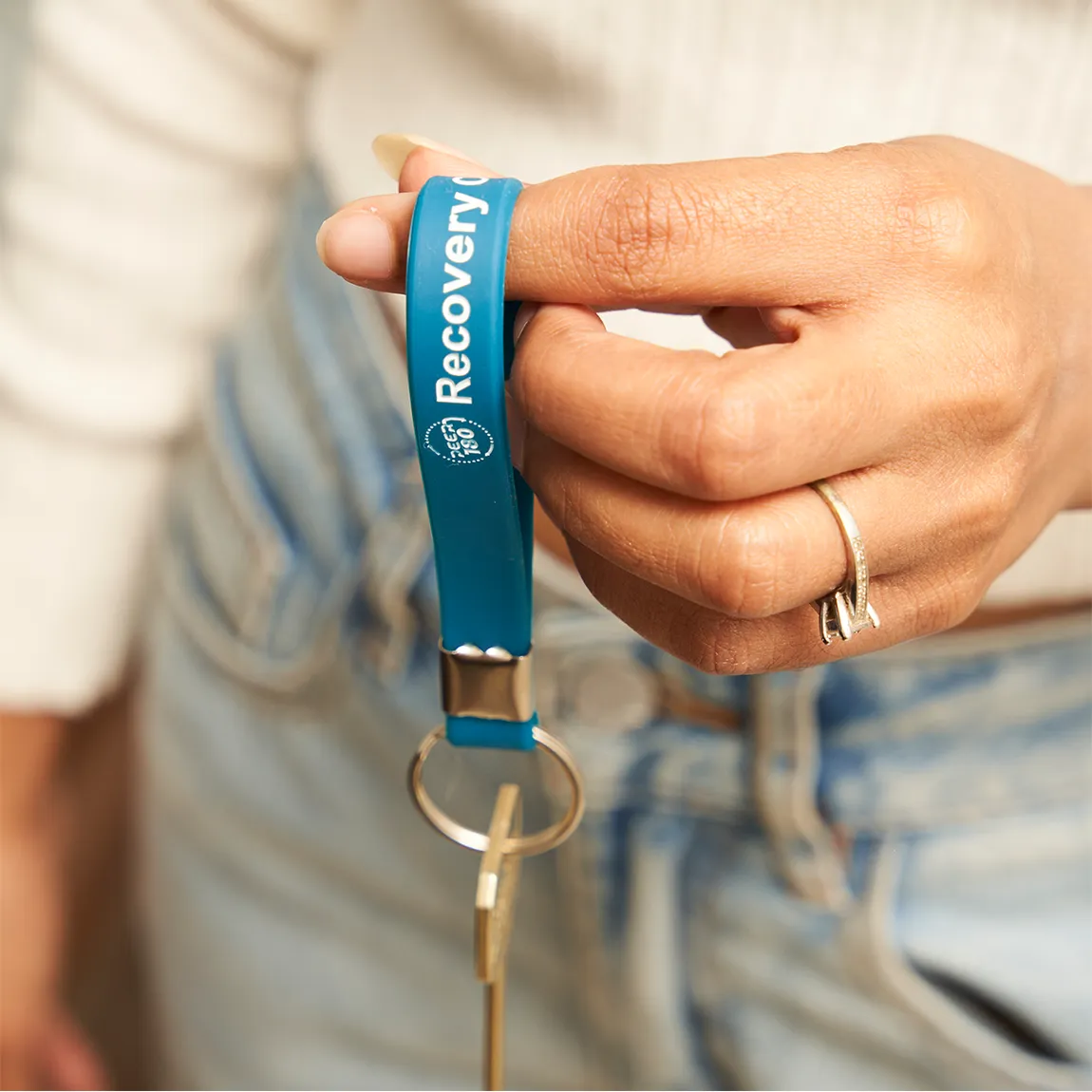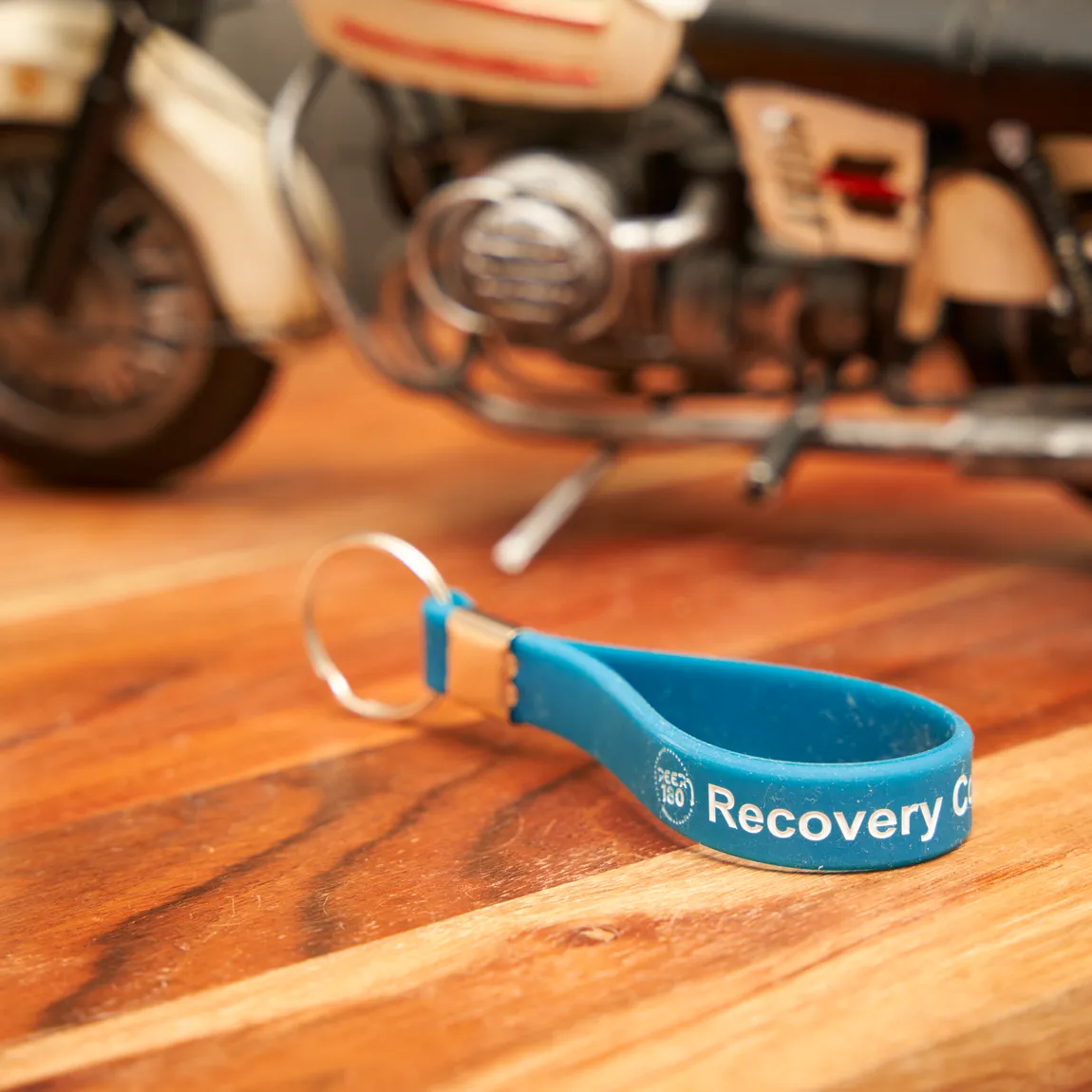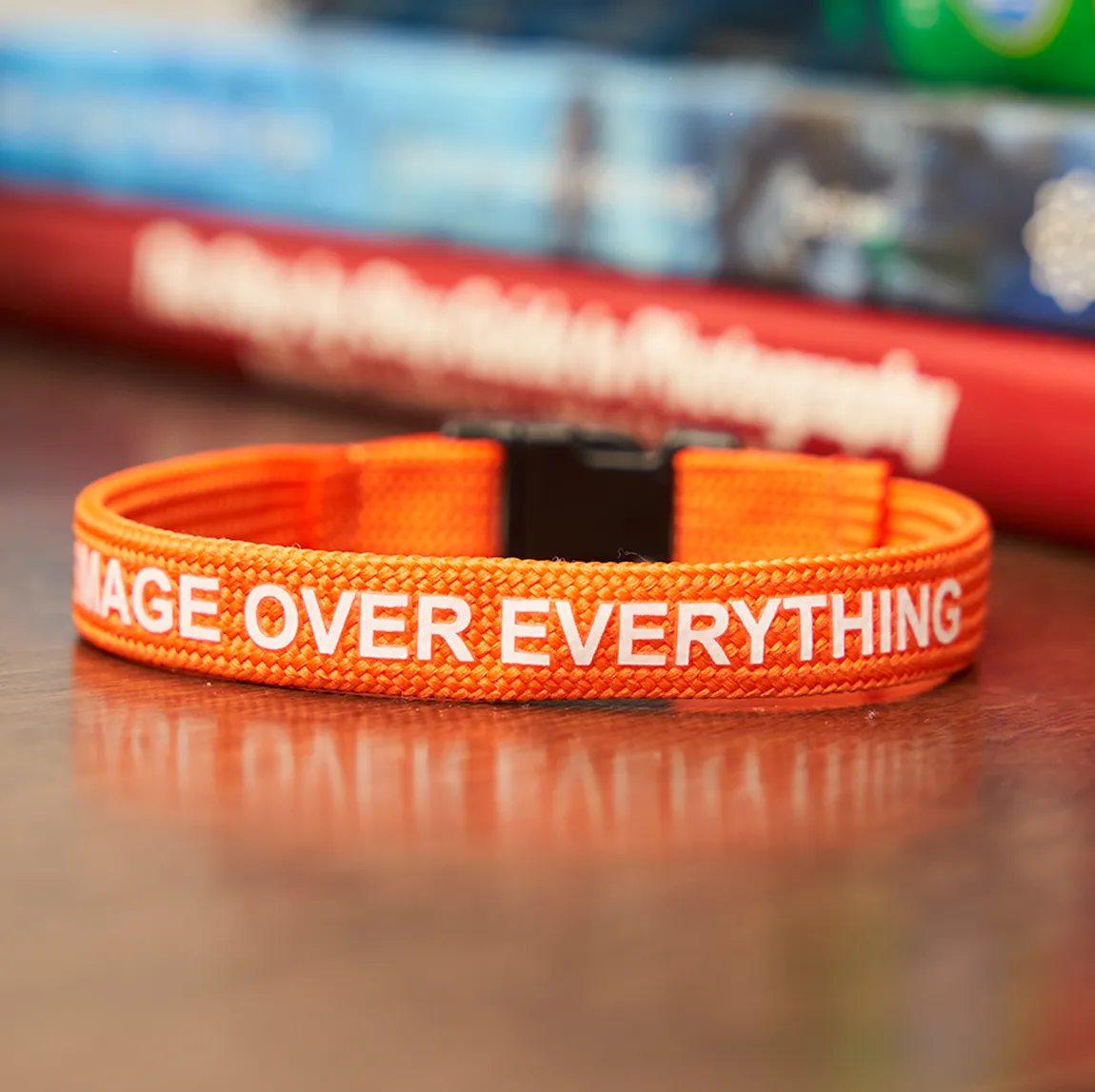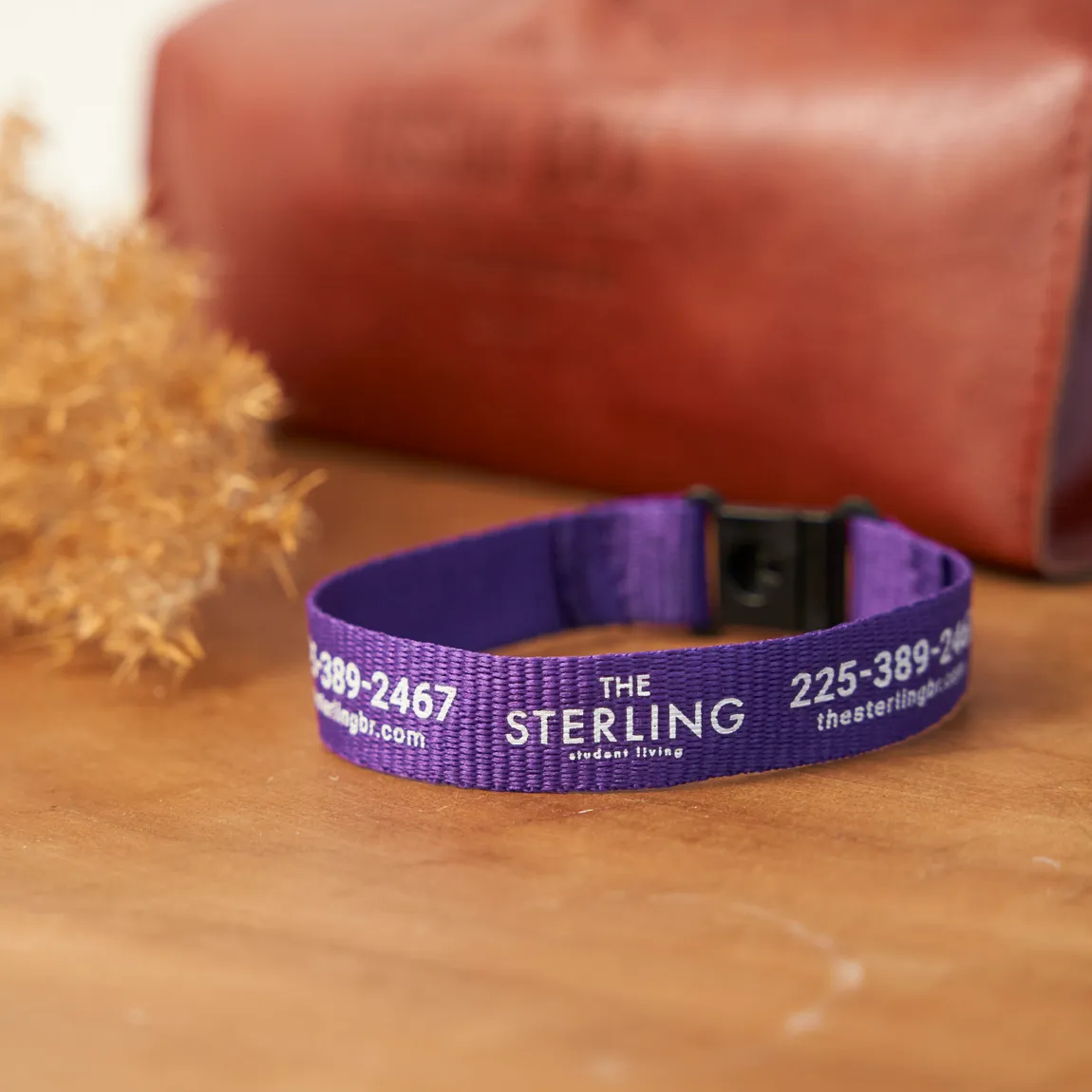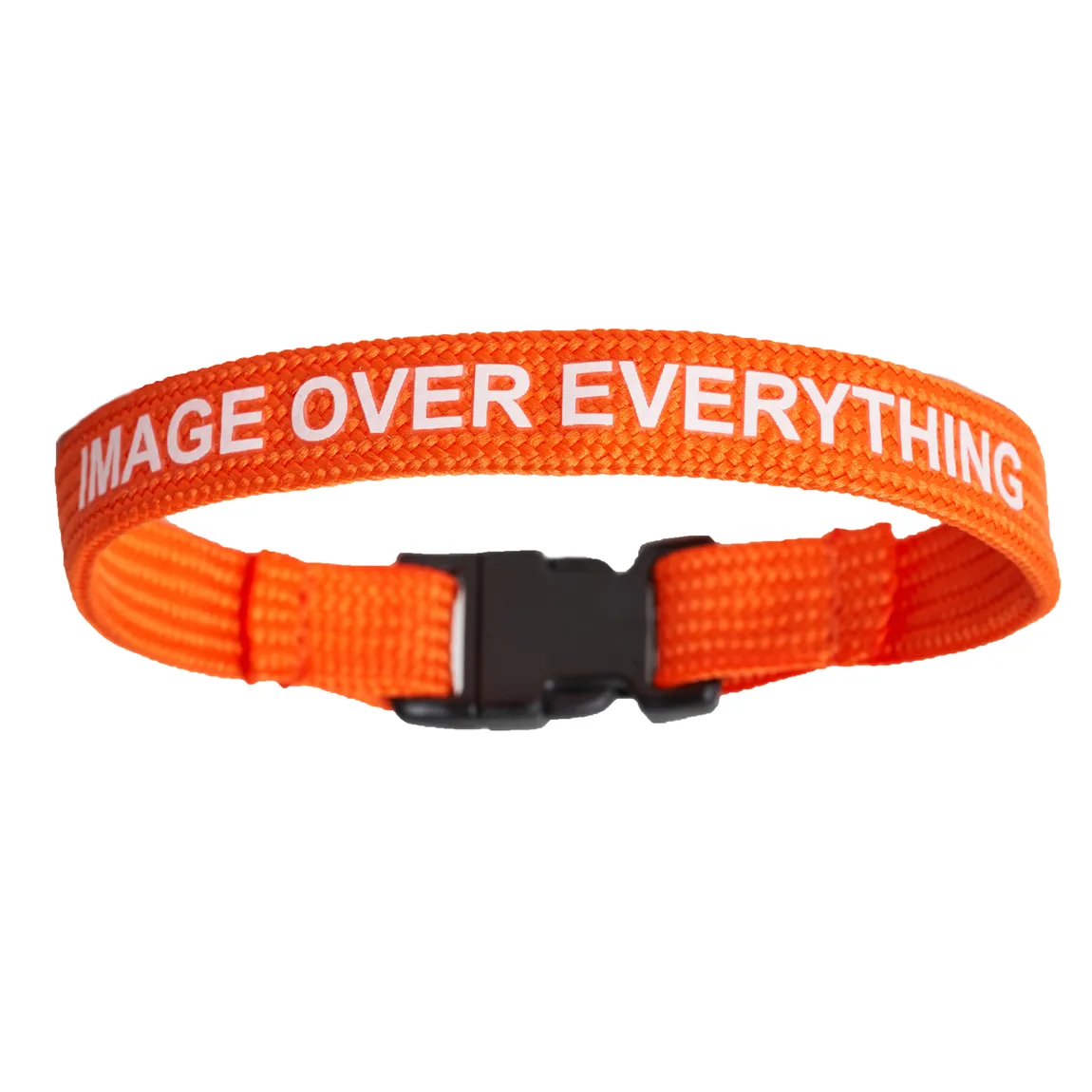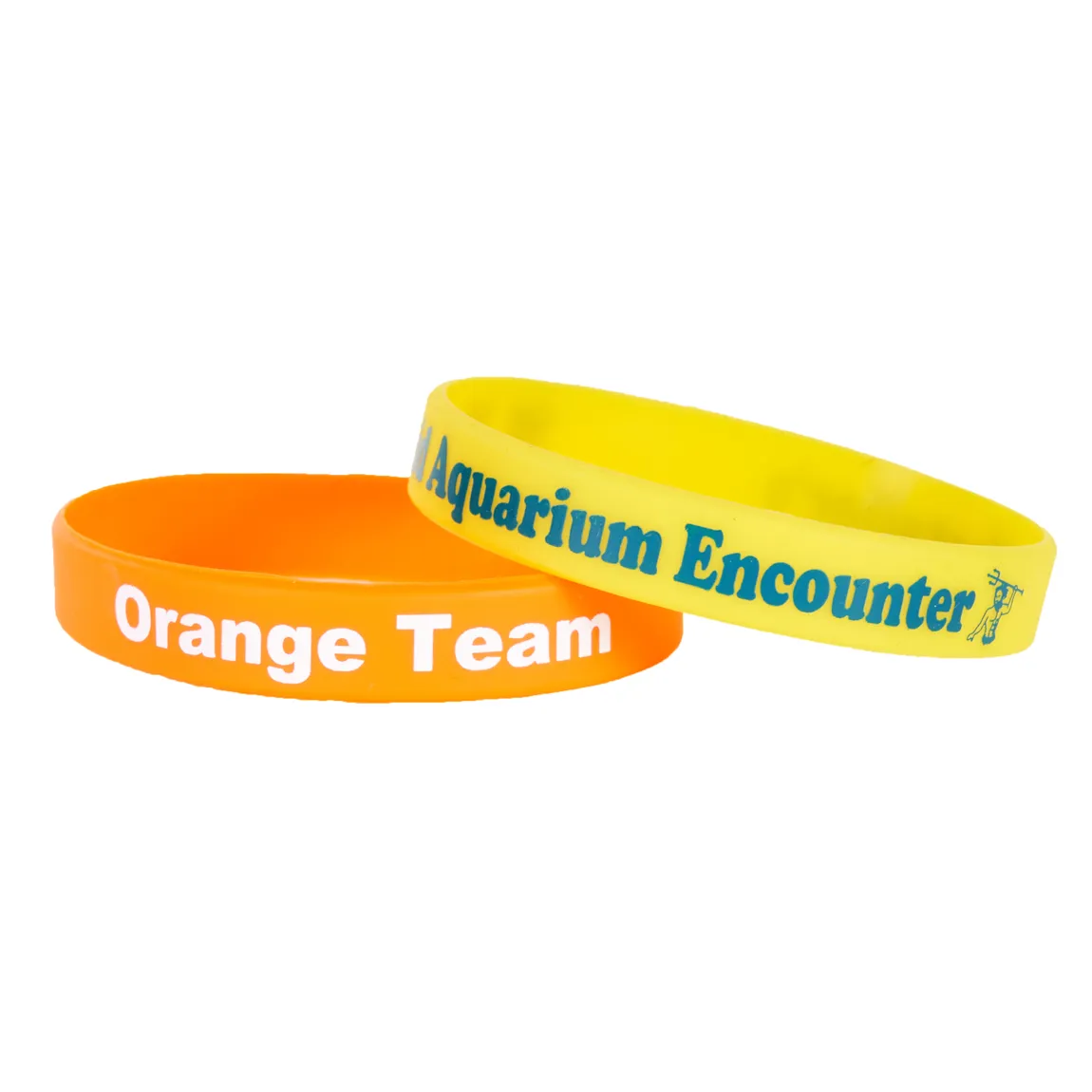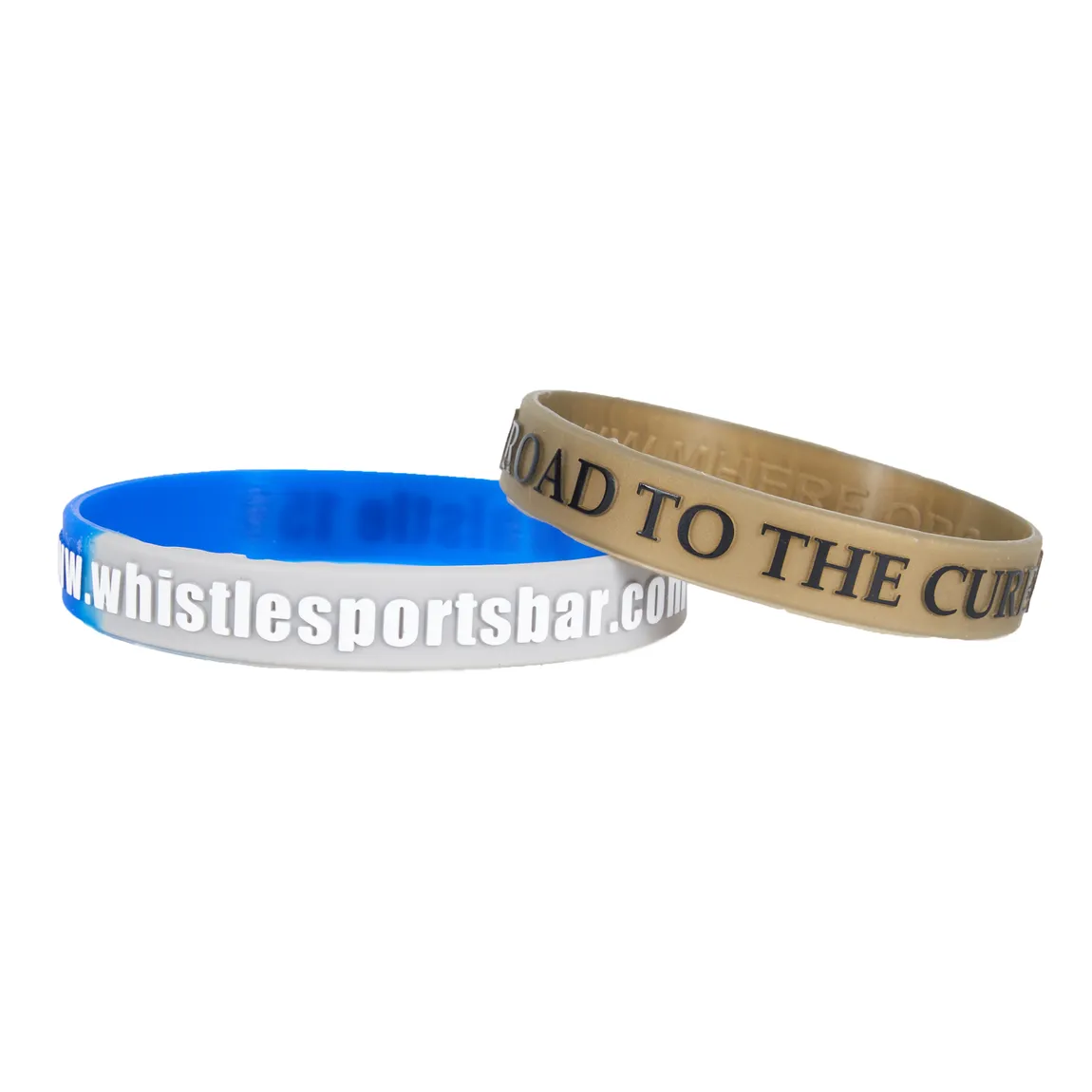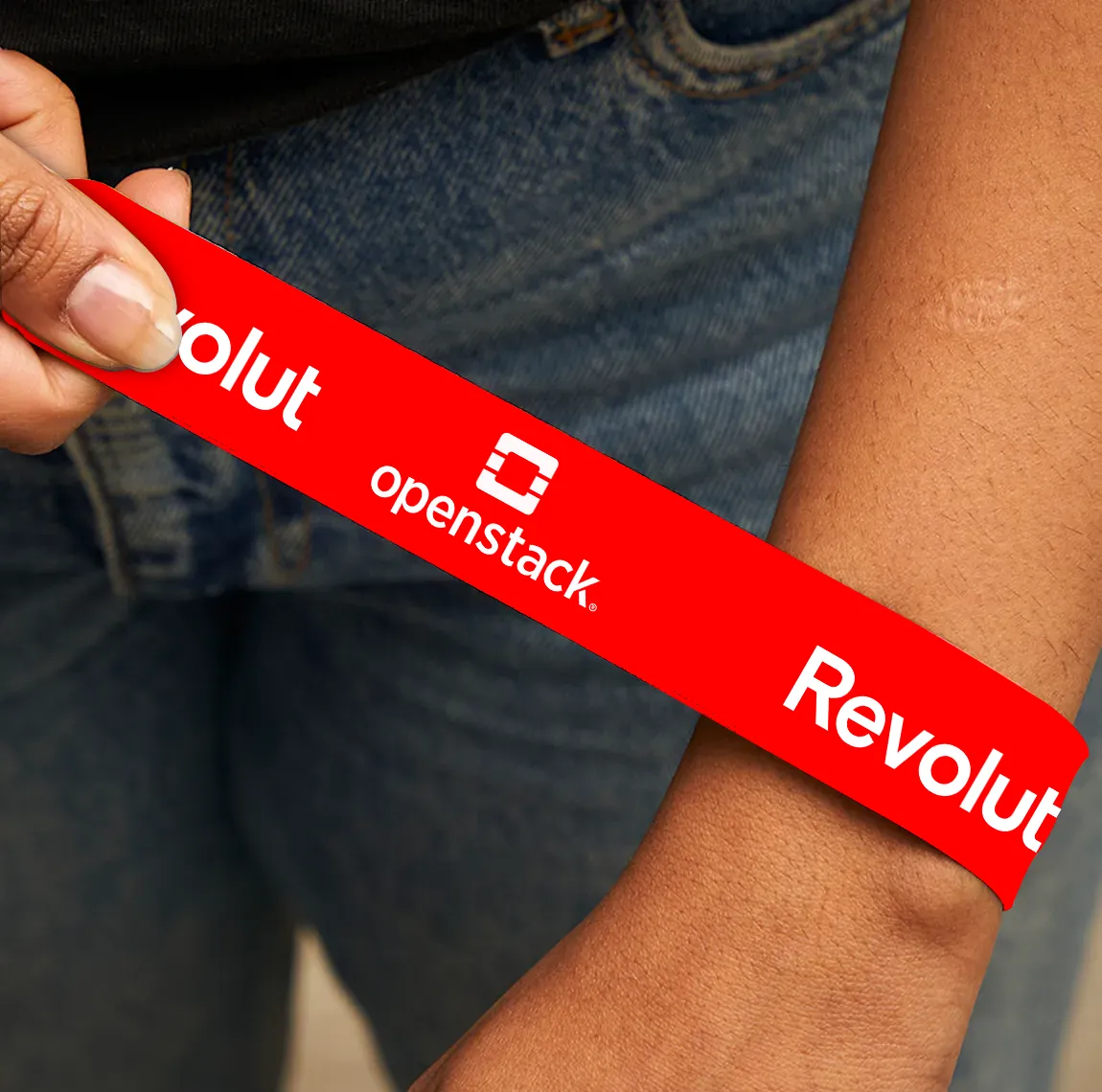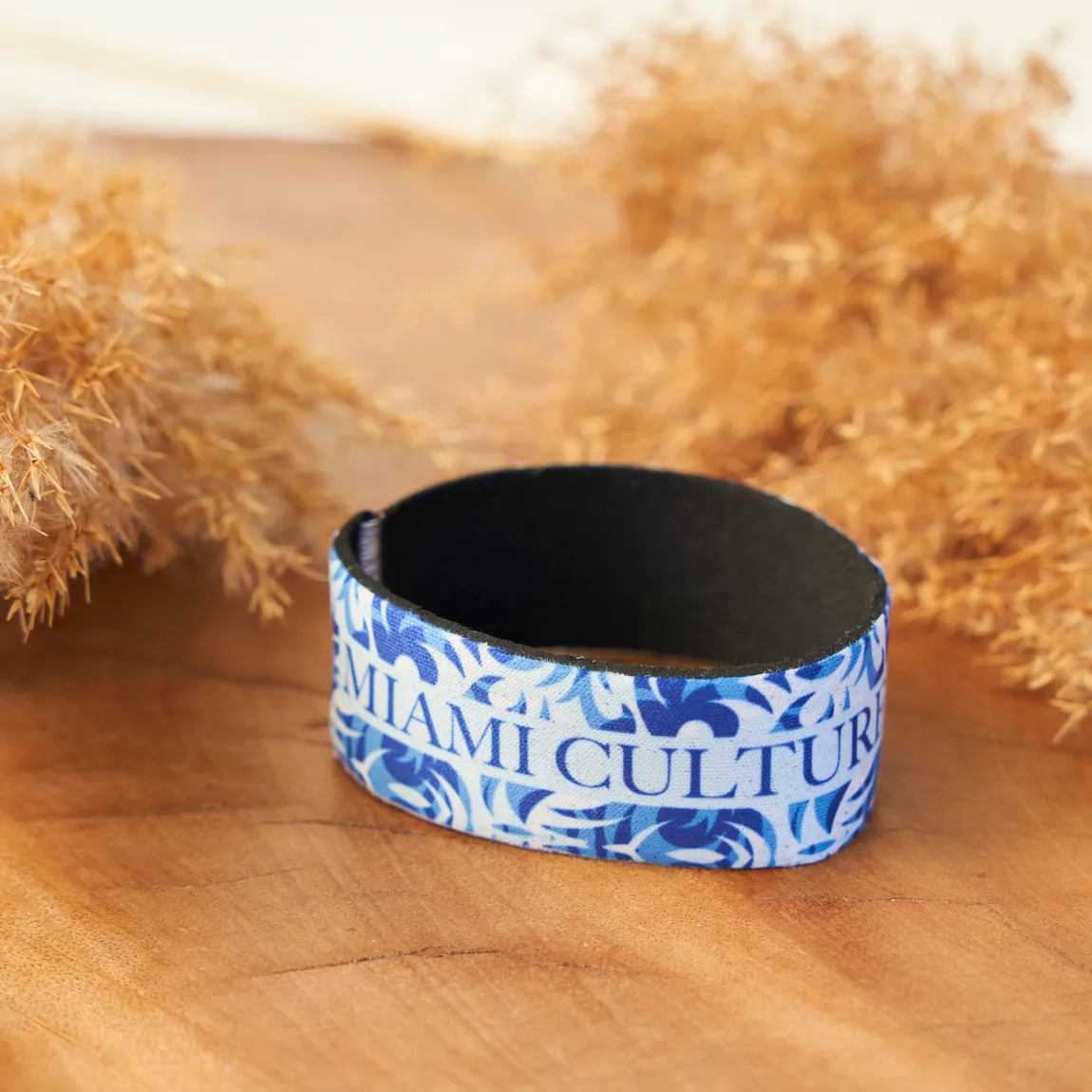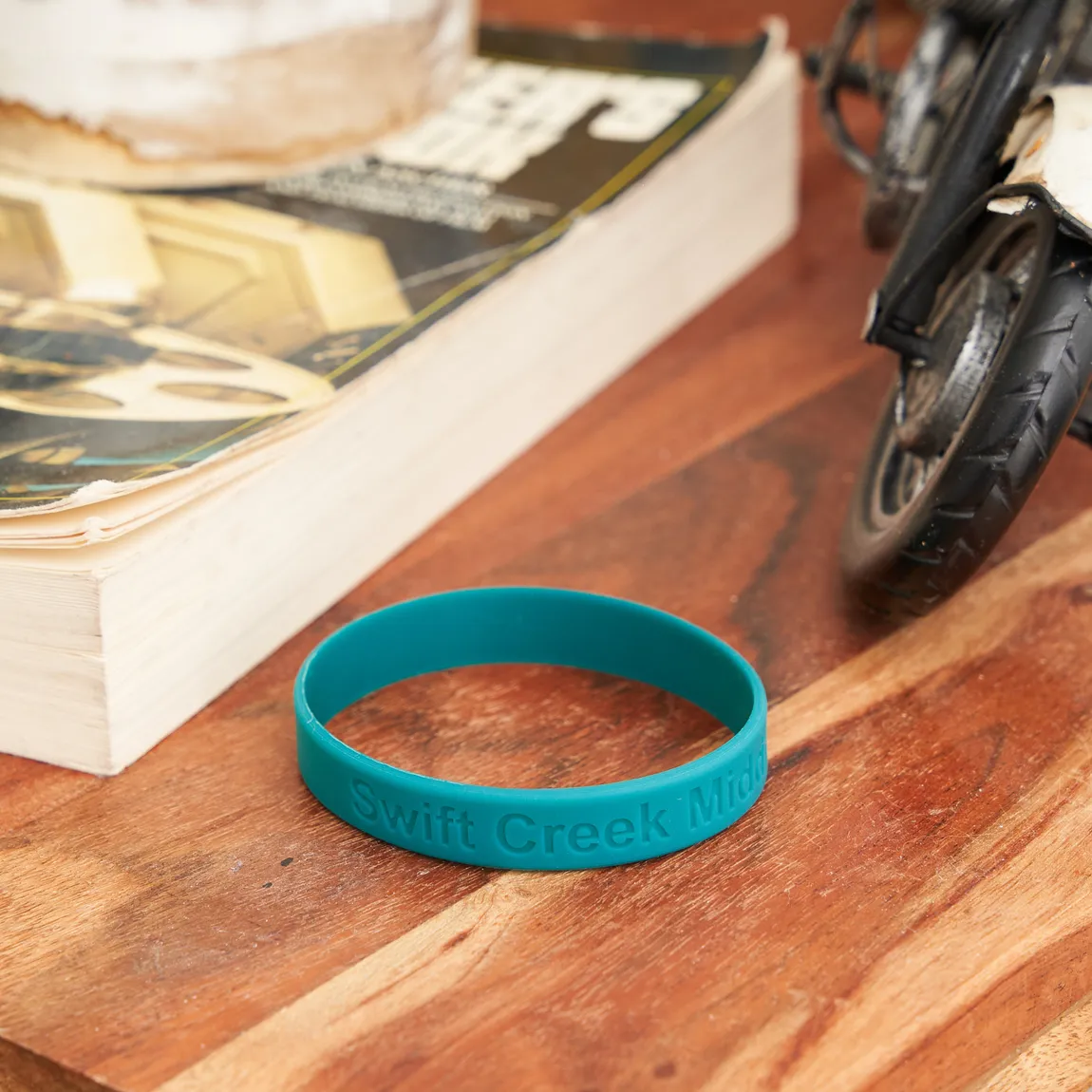Wristbands have become hugely popular as promotional accessories for events due to their versatility, ease of use, and numerous design options. The most common wristband types are silicone wristbands and cloth wristbands. Each wristband material—whether silicone or cloth—offers unique qualities and benefits, depending on your specific event needs.
While the wristband material is the main difference between silicone and cloth wristbands, there’s more to these components than meets the eye. This article compares a silicone wristband to a cloth wristband to help determine the best choice for your event.
Whether you're organizing a concert, raising awareness for a cause, planning to customize a wristband souvenir, or sourcing accessories for amusement parks or other single-day events, understanding the nuances between different wristband types, such as silicone, cloth, and even vinyl or plastic wristbands, will ensure your selection perfectly complements your objective.
How Do Silicone and Cloth Wristbands Differ in Material and Texture?
Silicone Wristbands
Silicone wristbands are latex-free and made from a durable synthetic polymer known as silicone, derived from silica, a material found in sand. Due to their waterproof properties, silicone wristbands are extremely tear-resistant and can withstand various environmental conditions without losing their integrity. This makes them popular in water parks, amusement parks, and other outdoor venues where guests can wear them comfortably.
Thanks to the seamless molding process used in their manufacture, these printed wristbands are lightweight, flexible, and provide a comfortable fit.
The non-porous surface of a silicone wristband doesn't trap sweat, making it easy to clean and highly durable.
Available in many colors, silicone wristbands can feature design options like debossing, embossing, and color fill. These techniques allow for everything from simple logos to full-color styles, ensuring that your wristband always stands out.
|
Did you know? Wristbands are also commonly used in scientific research. Studies have used wristbands to observe kids' physical activity and measure wearers' exposure to different chemicals. |
Cloth Wristbands
On the other hand, cloth wristbands—especially woven ones—are usually made from polyester, cotton, or fabric blends, making them soft and comfortable to wear for several days. These bands are particularly popular at festivals, where attendees may wear them as souvenirs long after the event ends.
Thanks to their softness and breathability, cloth wristbands are environmentally friendly and less likely to cause skin irritation. Their woven texture is also highly customizable, presenting an option for intricate designs and patterns.
Cloth wristbands offer the added benefit of adjustability. They're equipped with superior closure systems like sliding beads or Velcro, allowing for a snug, secure fit.
However, festivals, concerts, and single-day gatherings often prefer a cloth wrist band due to its fabric texture, which provides a high-end look and premium feel.
What Are the Durability and Longevity Differences?
Silicone Wristbands
Silicone is a durable material that lasts for years without noticeable wear. It is tear-resistant and retains its bright colors despite extensive use. Silicone wristbands are often a slightly cheaper option compared to a cloth wrist band in the long run because they are inexpensive to manufacture en masse and require very little maintenance or upkeep, making them ideal for several-day or multiple-day festivities.
Thanks to its water-resistant features, a slicone wrist band is easy to clean with soap and water, extending its lifespan. These rubber wristbands boast durable material that holds well even in challenging surroundings, like high temperatures or wet conditions.
|
Did you know? Silicone or rubber wristbands printed with logos became a popular branding and marketing tool thanks to the Livestrong Foundation, established by former cyclist and cancer survivor Lance Armstrong. When Nike and Wieden+Kennedy developed fund-raising wristbands for the foundation in 2004, they became popular fashion accessories for kids and adults alike after athletes started wearing them in Tour de France 2004. |
Cloth Wristbands
While cloth wristbands are also durable like rubber wristbands, they may not have the same tear resistance as silicone. However, woven cloth wristbands are still solid and resistant to stretching, making them suitable for long-term wear without losing shape–perfect as a long-term event identification.
Compared to a silicone wristband, woven cloth wristbands may require careful handling when exposed to dirt or moisture and must be washed carefully to avoid fraying or loss of color.
Though silicone is durable for crowd control or high-energy celebrations like beverage redemption, cloth can be tailored for more premium celebrations like corporate gatherings.
That said, woven cloth wristbands are often designed for brief, intense usages—such as concerts or one-time events—where the band may serve as souvenirs afterward. Proper care and storage of cloth bands can extend their lifespan, but they tend to wear faster than silicone wristbands in harsh weather conditions.
Which Wristband Types Are More Comfortable to Wear?
Silicone Wristbands
One of the main advantages of silicone wristbands is their flexibility. Due to silicone's natural elasticity, these wristbands can stretch to fit various adult wrist sizes without feeling constrictive. The smooth texture also feels soft and slick against the skin without irritating.
Siloxane bonds in silicone are hypoallergenic, reducing skin irritation, such as redness and itching. However, silicone is waterproof and may not be as breathable as cloth, often leading to sweat accumulation during hot or humid conditions, which is common in water parks and amusement parks.
Regardless of these properties, many find them more comfortable, primarily because they’re lightweight and latex-free.
Cloth Wristbands
Cloth wristbands excel in comfort, mainly due to their breathability. While not waterproof, cloth wristband material promotes airflow, reducing sweat buildup on the wrist, making them ideal for multiple days or outdoor events.
They are often adjustable with a customizable closure, meaning wearers can achieve the optimal fit—crowd control at a concert or wristbands provided at multiple-day events.
Comfortability in wearing printed cloth wristbands will also depend on their specific material. Textiles have different properties beyond their appearance, and the type of material used for the waterproof wrist bands may have specific advantages and limitations that need to be considered.
How Do Silicone and Cloth Wristbands Compare in Terms of Customization?
Silicone Wristbands
Silicone wristbands offer a wide range of full-color customization options, making them popular for various events and promotional activities. As this rubber wristband is waterproof, their designs aren’t easily removed. You can personalize a silicone wristband with these techniques:
- • Debossing : This technique involves engraving the design into the silicone wristband, creating a recessed effect instead of a printed one. This method makes the bracelet durable and resistant to wear.
- • Embossing: In contrast to debossing, embossing raises the design above the surface of the wristband, providing a tactile feel when customized.
- Screen Printing: This method allows for detailed and colorful designs to be printed on the surface of the wristband. It is ideal for intricate logos and text in wristbands.
- • Color-Filling: Debossed or embossed designs can be filled with color to enhance visibility and aesthetic appeal.
- • Swirl and Segmented Colors: Silicone wristbands can be produced in multiple colors, either swirled or segmented into distinct sections, offering a unique visual effect.
Cloth Wristbands
Cloth wristbands are known for their versatility in customization options. They are often used for events that require a more sophisticated appearance–giving them a somewhat premium feel when worn in events. You can personalize a cloth bracelet with these methods:
- • Woven Designs: Patterns and text can be woven directly into the wristband fabric, allowing for detailed and durable designs for wristbands.
- • Sublimation Printing: This technique uses heat to transfer dye onto the wristband cloth, enabling full-color, high-resolution images and gradients.
- • Embroidery: Designs can be embroidered onto the wristband, providing a textured and premium look.
- • Adjustable Closure: Cloth bracelets can be customized with various closure types, such as plastic or metal clasps, to suit different security needs.
- • Full-Color Printing: Cloth wristbands can be printed with vibrant, full-color designs that need many colors, making each wristband suitable for event branding and promotional purposes.
Get Your Custom Wristbands Today!
Which Wristband Offers More Versatility in Design?
Silicone Wristbands
Although silicone is not biodegradable, many manufacturers now produce sustainable silicone options, incorporating recycled silicone or natural fillers to reduce environmental waste. While these rubber wristbands durable, reusable, and extremely strong, landfill disposal can pose long-term ecological concerns.
Opting for Recyclable silicone wristbands lowers their ecological footprint, making them a better option for organizations aiming to merge environmental consciousness with the practicality of their printed wristband design.
Cloth Wristbands
Cloth wristbands can have various environmental impacts, depending on their composition. For instance, cotton is biodegradable, making it a greener product. However, polyester—a common material in woven cloth wristbands—is made from plastic, meaning it's not biodegradable but can be recycled.
More environmentally-focused manufacturers offer biodegradable cloth wristbands made from organic cotton or recycled polyester, offering the dual eco-benefits of promoting sustainability while ensuring high design versatility and durability.
How Do Silicone and Cloth Wristbands Impact the Environment?
Silicone Wristbands
Silicone wristbands are made from synthetic rubber, which is not biodegradable. Here are other properties of silicone wristbands that may affect their recyclability:
- • Production: The production of silicone wristbands involves extracting and processing silica, a natural resource. This process can have environmental impacts, including energy consumption and emissions.
- • Manufacturing: The manufacturing process requires chemical additives, which can contribute to pollution if not managed properly.
- • Disposal: Silicone wristbands that are disposed of in landfills can contribute to long-term environmental issues, as they do not break down easily. Incineration is another disposal method, but it can release harmful emissions if not conducted in a controlled environment.
Efforts to minimize the environmental footprint of silicone production include using renewable energy sources and implementing waste reduction strategies. Encouraging recycling and repurposing of silicone wristbands can help mitigate these disposal challenges.
The recycling process involves breaking down the silicone into its base components, which can be repurposed for new products. Despite this, the availability of such facilities is limited, and not all recycling centers accept silicone.
|
Did you know? The most popular method of reusing silicone is upcycling it into products like silicone-coated fabrics or sealants. However, experts continue looking for more effective recycling techniques for longer-term sustainability. |
Cloth Wristbands
Cloth wristbands are typically made from materials such as cotton, polyester, or a blend of fibers. From the perspective of recyclability:
- • Cotton wristbands are biodegradable and can decompose naturally over time, making them a more environmentally friendly option.
- • Polyester, on the other hand, is a synthetic fiber derived from petroleum, which is not biodegradable but can be recycled.
- • Non-recyclable components, such as metal clasps or plastic tags, also affect the recyclability of cloth bracelets.
The environmental impact of cloth wristbands varies based on the materials used:
- • Cotton wristband production, for example, requires significant water resources and often involves using pesticides and fertilizers, which can harm ecosystems.
- • Polyester wristband production relies on fossil fuels and generates greenhouse gas emissions.
Sustainable practices involving cloth wristbands include:
- • Organic, Recycling-based Production: Organic cotton farming and recycled polyester are helping reduce the environmental impact of cloth bracelets.
- • Composting: Cloth wristbands made from natural fibers like cotton can be composted, reducing their impact on landfills.
- • Proper Disposal: Proper disposal of cloth bracelets involves separating recyclable components and ensuring they are processed through appropriate channels to minimize environmental harm.
- • Special Recycling: Wristbands made from synthetic fibers require different disposal methods, such as recycling.
Are There Eco-Friendly Options Available?
The demand for eco-friendly products has increased significantly, prompting manufacturers to explore sustainable wristband alternatives. Both silicone and cloth wristbands have seen innovations aimed at reducing their environmental impact.
Silicone Wristbands
Silicone wristbands, traditionally made from synthetic rubber, are not biodegradable. However, manufacturers have started to develop sustainable silicone options. These alternatives often incorporate recycled silicone materials or use a blend of natural fillers to reduce the overall synthetic content. While these wristband options may not be fully biodegradable, they reduce waste and resource consumption.
- • Recycled Silicone: Some manufacturers offer wristbands made from recycled silicone, which reduces the demand for new raw materials.
- • Natural Fillers: By incorporating natural fillers, the amount of synthetic silicone is decreased, making the product more sustainable.
- • Reusability: Silicone wristbands are durable and can be reused multiple times, which reduces the need for single-use products.
Cloth Wristbands
Cloth wristbands have a more straightforward path to sustainability due to the availability of natural fibers. Many manufacturers now offer wristbands made from organic or recycled materials, which are more environmentally friendly.
- • Organic Cotton: Wristbands made from organic cotton are free from harmful pesticides and chemicals, making them a sustainable choice.
- • Recycled Polyester: Some cloth bracelets are made from recycled polyester, which helps in reducing plastic waste.
- • Biodegradable Options: Certain natural fibers used in cloth wristbands are biodegradable, allowing them to break down more quickly in the environment.
Making the Right Choice of Wristbands for Your Event
The best choice between silicone and cloth wristbands depends on factors like event duration, environment, and customization needs. Silicone wristbands are incredibly durable and offer high-impact designs with a smooth texture, while cloth wristbands are comfortable, breathable, and excel in multiple-day events.
Ready to start creating your perfect wristband? Whether you require tear-resistant bands for water parks or woven cloth wristbands for concerts, Wrist-Band.com offers fully customizable printed wristbands. Select your wristband style, get creative with designs, and make an impression at your next event!

/filters:quality(80)/fit-in/630x380/blog/image-1729815849.png)
